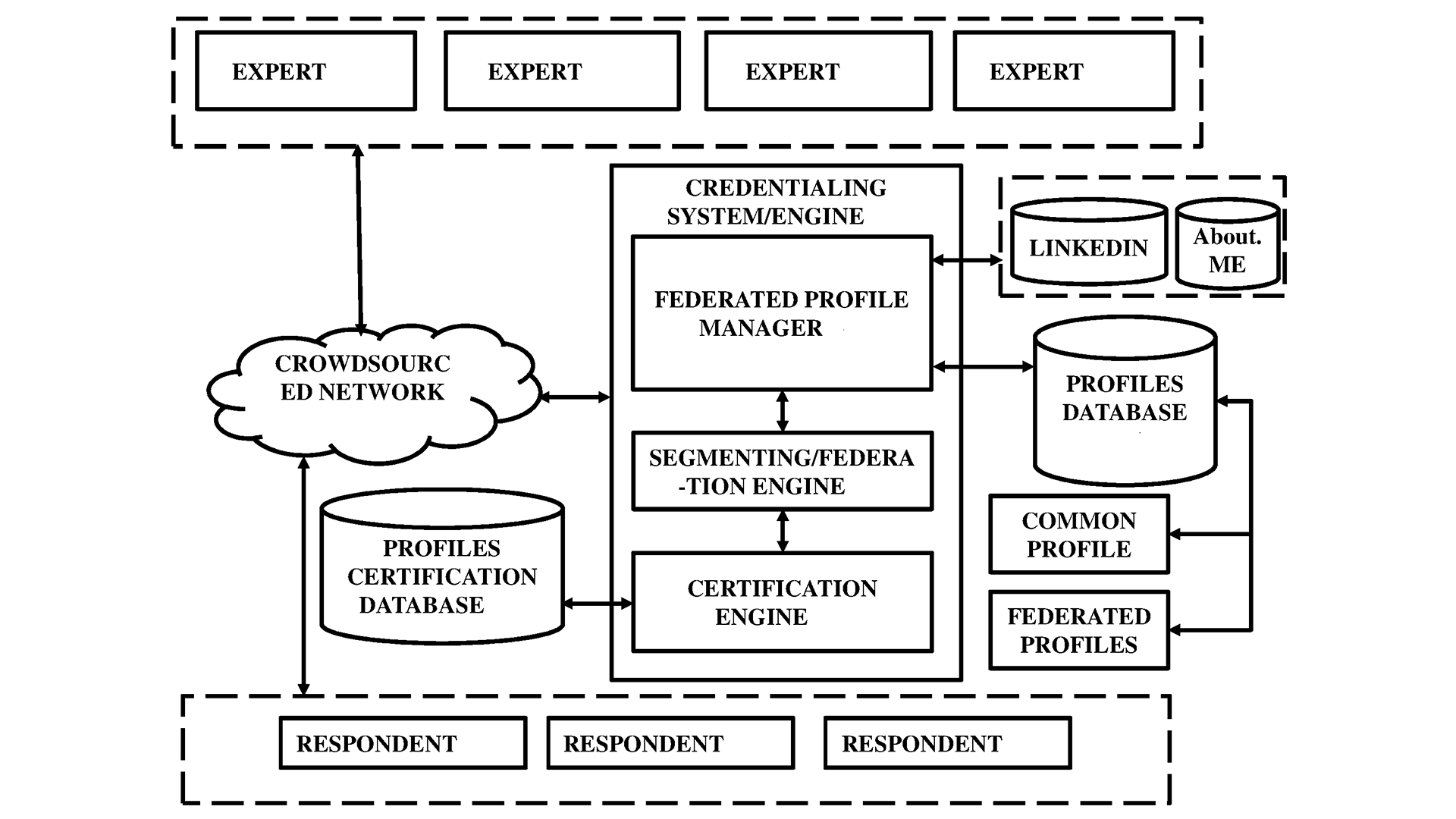
This inventive technology described in this content addresses a critical problem faced by organizations when it comes to evaluating electronic documents, particularly in the context of selecting valuable ideas for financial aid or rewards. In many instances, organizations receive numerous submissions for evaluation, making it challenging to identify the most valuable ones. The traditional approach of relying solely on textual feedback and review comments has proven to be insufficient and unreliable. This is where the distributed electronic document review system utilizing blockchain technology and computerized scoring comes into play.
Document Evaluation: Blockchain-Powered Solution
This innovative system leverages a blockchain-configured infrastructure to facilitate expertise-driven reviews and scoring of electronic documents within a crowdsourced environment. It includes a credentialing engine, which ensures that reviewers possess the necessary expertise and reputation to provide reliable evaluations. Moreover, the system considers attributes like the officiality of the expert. These features help organizations in making more informed decisions about which ideas or documents to support.
Crowdsourcing Expertise: The Future of Document Review
What sets this invention apart is its ability to aggregate feedback from crowdsourced experts, both in textual and visual forms, to provide a comprehensive assessment of electronic documents. It addresses the limitation of solely relying on textual feedback, as it acknowledges that feedback can come in various formats. By incorporating visual feedback and reviews, organizations gain a more holistic understanding of the quality and potential of the submitted documents. This not only streamlines the evaluation process but also enhances its reliability, ultimately helping organizations make more informed decisions about which ideas to support or documents to endorse.
The invention offers a solution to the longstanding challenge of effectively evaluating electronic documents in a crowdsourced environment. By harnessing the power of blockchain technology, credentialing, and the inclusion of both textual and visual feedback, it empowers organizations to make more informed and reliable decisions about valuable ideas and documents, leading to better allocation of resources and support for innovative initiatives.
The concept and functioning of this invention revolve around a blockchain-configured distributed architecture-based system operating within a communication network. At its core, this system aims to harness the power of crowdsourced expertise to evaluate electronic documents effectively. Here’s how it works:
Crowdsourced Expert Credentialing
The system maintains a vast repository of digital profiles associated with crowdsourced experts. These profiles are created by aggregating information from various sources distributed across the communication network. To ensure the credibility of these experts, a credentialing engine allows crowdsourced respondents to evaluate and credential these experts. The credentialing process involves assessing segmented digital profiles associated with each expert. The more respondents credential an expert, the higher their credibility, as indicated by a computerized crowdsourcing index. The system collates these credentialed segmented digital profiles to build a comprehensive digital profile for each expert.
Attributes and Weights
The system assigns various attributes to each expert, which include their crowdsourced credentialed expertise, reputation within a relevant community, and officiality in a specific job or designation. These attributes are assigned different computer-calculated weights based on their significance in the evaluation process.
Expert Scoring Module
An expert scoring module takes these attributes and weights into account to determine an aggregate score for each expert. This score serves as a measure of their expertise and trustworthiness within their relevant field.
Electronic Document Scoring
The system receives electronic documents for evaluation, but only from crowdsourced experts with an aggregate score greater than a defined threshold. The document scoring process involves two key components:
a. Textual Review Analysis: A natural language processing-based (NLP-based) analysis engine processes textual reviews and comments provided by the crowdsourced experts. This component analyzes the textual content to assess the quality and relevance of the electronic document.
b. Enhancing Document Evaluation with Visual Feedback: The visual scoring engine employs specialized microprocessors and sensors, including eye tracking systems and micro facial expression sensors, associated with the computing devices of crowdsourced experts. It tracks eye movements and facial expressions to determine the experts’ reactions to the document. The system interprets predefined patterns in eye tracking and micro facial expressions to assign a review score based on visual feedback.
Transparent and Reliable Document Scoring
The document scoring engine combines the individual textual and visual review scores obtained from the crowdsourced experts to calculate an aggregate score for the electronic document. This score represents the overall evaluation of the document’s quality and potential.
Ensuring Expert Authenticity: Identity Validation in Crowdsourced Evaluation
To ensure the authenticity of crowdsourced experts, the system incorporates an expert identity validation device. This device verifies the identities of the experts during or before the review process. It uses multiple methods, including device pattern assessment, network pattern assessment, geo-spatial mapping, and facial expression validation. These checks help confirm that the experts are who they claim to be, enhancing the integrity of the evaluation process.
This invention leverages blockchain technology and a distributed architecture to create a robust system for evaluating electronic documents using crowdsourced expertise. It ensures the credibility of reviewers, combines textual and visual feedback for comprehensive assessments, and offers transparency through a user-friendly interface, ultimately assisting organizations in making informed decisions about valuable ideas and documents.
